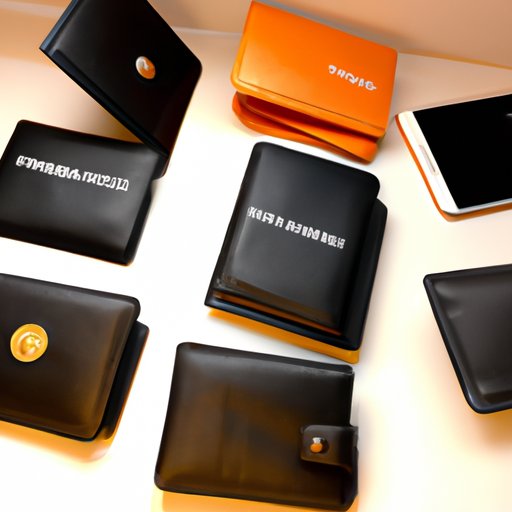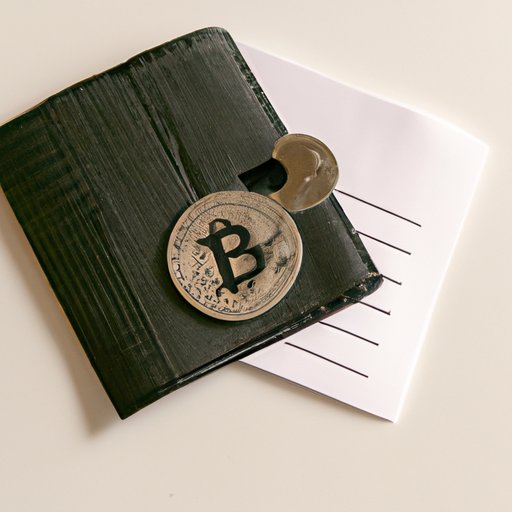Introduction
A Bitcoin wallet is a digital storage service that allows users to store, send, and receive Bitcoin (BTC). It works as an online bank account and enables users to access their digital currency from anywhere in the world. As such, it is important for anyone who holds or intends to hold any amount of Bitcoin to understand how to use a Bitcoin wallet properly and securely.
Using a Bitcoin wallet offers several benefits, such as allowing users to make transactions faster than traditional banking systems, providing more control over funds, and giving users the ability to remain anonymous when making payments. Additionally, with the growing popularity of cryptocurrency, there are now more options than ever for users to choose from when selecting a Bitcoin wallet.
Step-by-Step Guide to Setting up a Bitcoin Wallet
Setting up a Bitcoin wallet is a straightforward process. The first step is to choose the right type of wallet. There are various types of wallets available, each with its own advantages and disadvantages. Depending on the user’s needs, some may be better suited than others.
Once the user has chosen the appropriate wallet, the next step is to download the wallet app or software. This can typically be done by visiting the official website of the wallet provider and downloading the appropriate version for the user’s device. After the download is complete, the user will need to install and set up the wallet. This usually requires creating a username and password, as well as entering other personal information.
The last step in setting up a wallet is to secure it. This is an important step as it helps protect the user’s funds from being stolen or lost. Users should always make sure to enable two-factor authentication and use a strong password to prevent unauthorized access to their wallet.

How to Make Secure Transactions with Your Bitcoin Wallet
After setting up a wallet, the user can start making transactions. To do this, they will need to understand transaction fees and how to verify and sign transactions. Transaction fees are the amount of money that is charged for processing a Bitcoin transaction. They are paid to miners, which are computers that process the transactions. Fees vary depending on the size of the transaction and the speed at which it needs to be processed.
To ensure the security of the transaction, users should always verify that the address they are sending funds to is correct before sending. Additionally, users should always sign their transactions with their private key to prove that they are the ones initiating the transaction.
Tips for Managing Your Funds Safely in a Bitcoin Wallet
Managing funds safely in a Bitcoin wallet is essential for ensuring that the user’s funds remain secure. The first step is to keep the user’s private keys secure. Private keys are used to access the wallet and should never be shared with anyone. Additionally, users should back up their wallet regularly to avoid losing funds in the event of a system failure.
It is also important to store Bitcoins offline. Storing Bitcoins offline ensures that they are not vulnerable to hackers or other forms of cybercrime. Additionally, users should only store the amount of Bitcoin that they need for immediate use and keep the rest of their funds in a secure offline wallet.

An Overview of Different Types of Bitcoin Wallets
There are several different types of Bitcoin wallets available. Desktop wallets are installed directly onto a computer or laptop and provide users with full control over their funds. Mobile wallets are specifically designed for smartphones and tablets and allow users to make transactions on the go. Web wallets are hosted on cloud servers and provide users with easy access to their funds from any web browser.
Hardware wallets are physical devices that store Bitcoin securely. They are considered one of the safest methods of storing Bitcoin as they are not connected to the internet. Paper wallets are another option and are simply printed documents containing a user’s private keys and public keys. They are not recommended for long-term storage due to their vulnerability to theft and loss.
Conclusion
Using a Bitcoin wallet is a great way to store, send, and receive Bitcoin. By understanding how to set up a wallet, make secure transactions, and manage funds safely, users can ensure that their funds remain secure. Additionally, there are several different types of wallets available, each with its own advantages and disadvantages. No matter which wallet a user chooses, it is important that they take the necessary steps to keep their funds safe.
(Note: Is this article not meeting your expectations? Do you have knowledge or insights to share? Unlock new opportunities and expand your reach by joining our authors team. Click Registration to join us and share your expertise with our readers.)
